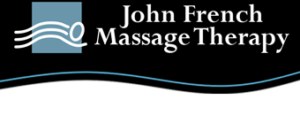What is CranioSacral Therapy?
CranioSacral Therapy (CST) was pioneered and developed by osteopathic physician John E. Upledger. Upledger served as a clinical researcher and Professor of Biomechanics at Michigan State University and ran extensive scientific studies from 1975 to 1983.
CST is a gentle, hands-on method of evaluating and enhancing the functioning of a physiological system called the craniosacral system – comprised of the membranes and cerebrospinal fluid that surround and protect the brain and spinal cord.
Using a soft touch generally no greater than 5 grams, or about the weight of a nickel, practitioners release restrictions in the craniosacral system to improve the functioning of the central nervous system.
By complementing the body’s natural healing processes, CST is increasingly used as a preventive health measure for its ability to bolster resistance to disease and is effective for a wide range of medical problems associated with pain and dysfunction, including:
- Migraine Headaches
- Chronic Neck and Back Pain
- Motor-Coordination Impairments
- Colic
- Autism
- Central Nervous System Disorders
- Orthopedic Problems
- Traumatic Brain and Spinal Cord Injuries
- Scoliosis
- Infantile Disorders
- Learning Disabilities
- Chronic Fatigue
- Emotional Difficulties
- Stress and Tension-Related Problems
- Fibromyalgia and other Connective-Tissue Disorders
- Temporomandibular Joint Syndrome (TMJ)
- Neurovascular or Immune Disorders
- Post-Traumatic Stress Disorder
- Post-Surgical Dysfunction
What to expect?
A typical CranioSacral session can last anywhere from thirty to ninety minutes depending on the client and their needs. The client lies fully clothed on a massage table which is sometimes cushioned further by an air mattress or pad. No oil or lotion is used. The therapist will assess the client by gently laying their hands in key areas along the head and body, observing for where the cranial rhythm is weak or strong. After the assessment the therapist will place specific hand holds along the head and body with a gentle 5 gram amount of pressure and wait until the therapist feels a shift in the area. The session is typically very relaxing.
Always consult your doctor and your therapist to see if massage or specific massage types are right for you.




